2. Cloister
We are located in the part of the cathedral close which was reserved for the communal life of the canons. Merian's view of the town gives us some orientation as to where we are standing within the town walls. The hedge in front of us traces the path of the cloister.
The first cloister was part of the former Romanesque church, consecrated in 1103. We can still see the remains of its tower and, in front of us on the left, the sacristy. The cloister was rebuilt at the end of the 14th c.
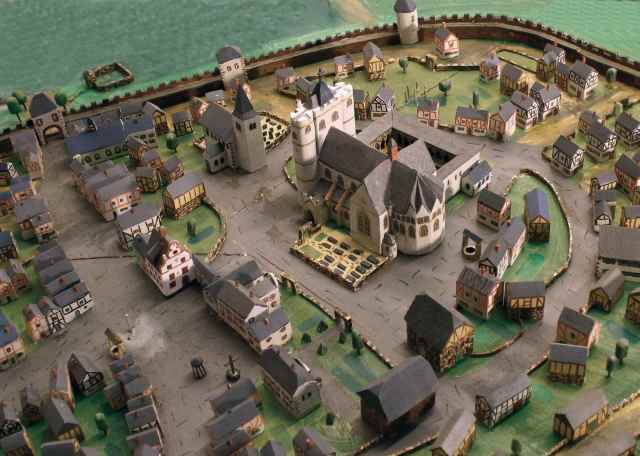
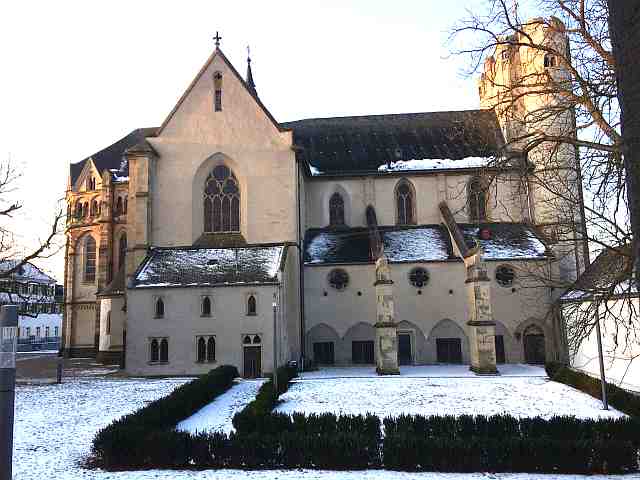
Traces of the arcades as well as tomb slabs from the church can be seen on the wall of the nave beneath the buttresses. Most of the church property ended up in private or state hands following Secularisation in 1802. The cloister was sold for demolition in 1810.
The Latin school, first mentioned in 1331, was located in the courtyard of the cloister (Nr. 16).
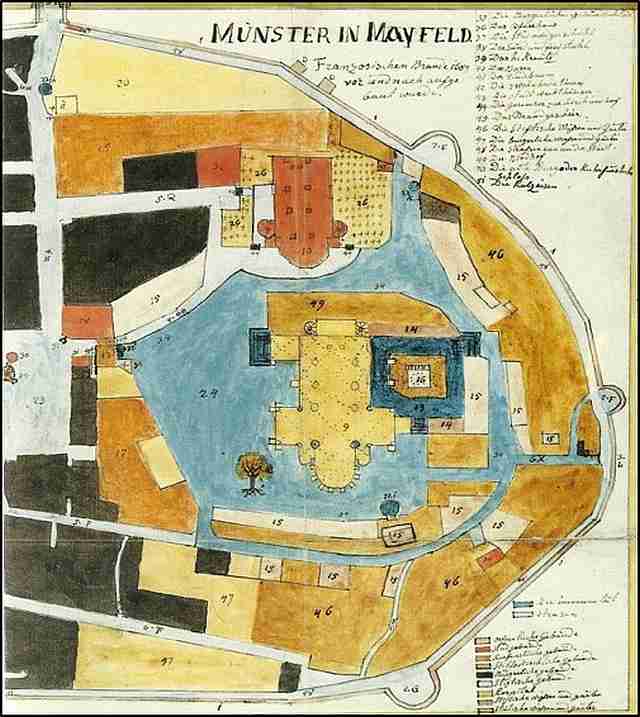
On our left, you can see the present-day parsonage, the former house of the canons from 1760. Behind us, their houses from the 18th century. These including the Baroque building built in 1770
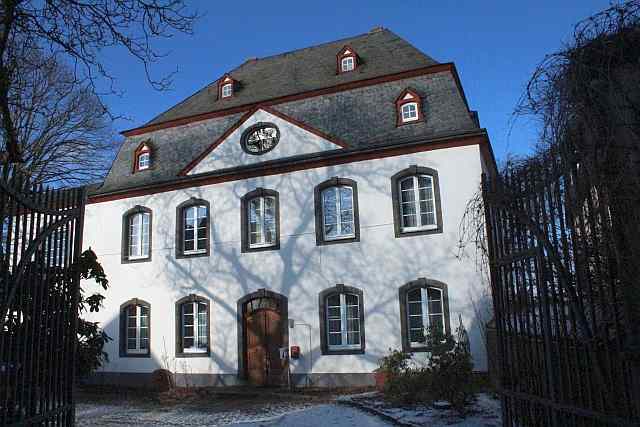
formed a ring around the church (map, Nr. 15). Members of the canonic chapter could lead a much freer life than members of a monastery. In the 18th c., some canons built "Lusthäuschen" outside the cathedral close. This house was built in 1780.
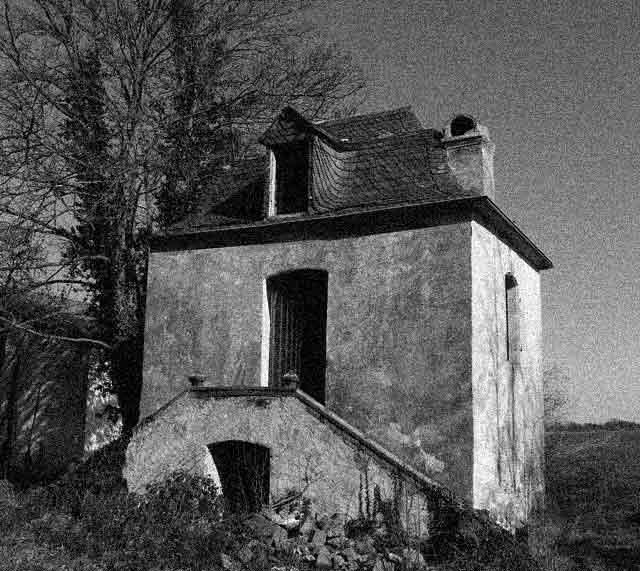
All in all, there were five such pavilions. On our right, you can see the former chapter house from 1348. The chapter room still exists today. The refectory and a large wine cellar for storing the wine tithes were located in it.
Glossary
Canons/Chapter
The governing body of the monastery was the chapter, the assembly of the canons. Numerous conditions had to be fulfilled to become a full member. These did not include ordination to the priesthood. The canon's official position was called prebend or prebend. The number of canons in Münstermaifeld varied between 10 and 19. Only members of the chapter could become holders of special dignity and responsibility, such as dean or scholaster. Recommendations for admission as canons came from the archbishop, the pope or even the king. Our canons were secular clergy, belonging to the diocesan clergy, not to a religious order. They did not take vows, lived in separate households with personal property. They were distinguished as non-ruled canonsnon from the ruled canons, like the Augustinian canons who lived according to the Augustinian rule in communitye lived and without personal tenure.
Vicar
The vicars had the task of saying the endowed masses and annual commemorations at the altars assigned to them. Their number depended on the number of altars. When several altars were merged in 1660, the number of vicars also decreased. In the administration of their goods and income, they were subordinate to the chapter.
Merian
Matthäus Merian the Elder (1593-1650) was a Swiss-German engraver and publisher from a Basel family. His main work is the Topographia Germaniae. It was published from 1642 and continued after his death. The complete work contains 2142 individual views of towns, castles and monasteries. The town views give us reliable information about the street layout and the position of the buildings in the 16th/17th century. Merian was able to draw on the older work of Frans Hogenberg (1535-1590) for Münstermaifeld as well, who recorded the condition of the towns before the destruction of the Thirty Years' War in his town views "Civitates Orbis Terrarum".
Secularisation
In 1802, the ecclesiastical conditions in the territories on the left bank of the Rhine annexed by France were reorganised. With the exception of the bishoprics and parishes, almost all ecclesiastical institutions were abolished and their property transferred to the French state. All clergy affected by this received an annual pension of 500 (for those under 60) or 600 francs (over 60). In order to improve the finances of the French state, the secularised properties were auctioned off in the following years and went predominantly to private buyers. With the large number of ecclesiastical institutes in the former archbishopric of Trier, there was a drastic redistribution of property ownership, also in the Maifeld.
"Lusthäuschen"
These are baroque pavilions that some canons built for themselves in gardens. They are a particularly striking indication of the lifestyle of some canons in the 18th century.
Refectory
The dining room of the canons, along with the church and the chapter house, it was the most important room in the community.



